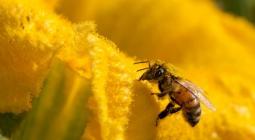European hamster and caterpillar fungus on brink of extinction.

Update to IUCN red list warns of hamster’s falling birth rate and high demand for fungus.
Hamsters and fungi may not be poster species among those threatened with extinction but are no less important in ecosystems, according to an updated list of the world’s most fragile species.
The European hamster once scurried across much of Europe and Russia but has now vanished from most of its original range and on current trends will go extinct within 30 years, according to the update of the IUCN red list, the global database of species on the brink.
The key reason for the decline is that there has been a drastic reduction in the birth rate. Whereas previously female hamsters gave birth to more than 20 young every year, now they produce only about five or six pups annually.
The reasons for such a marked change are not known, but factors ranging fromintensive farming to global heating and increasing light pollution may all play a role.
Caterpillar fungus is highly prized in traditional Chinese medicine for its supposed effects on the kidneys and lungs, and the high demand has led to a decline of nearly a third in its abundance.

The fungus, which grows only on the Tibetan plateau, has a curious parasitic lifecycle: when the larvae of ghost moths are buried underground, it grows through their bodies and emerges through the larvae’s heads.
For many people selling the fungus, which can fetchhigher prices than gold by weight, it is their main source of income.
Species around the world are facing unprecedented declines owing to human encroachment, intensive agriculture, overfishing and pollution in the oceans, the climate emergency and loss of habitat. Attempts at halting species decline have tended to be piecemeal and to concentrate on a handful of key species, but increasingly conservationists are calling for a concerted global effort.
Jane Smart, the global director of the IUCN’s biodiversity conservation group, said: “Saving the fast-growing number of threatened species from extinction requires transformational change, supported by action to implement national and international agreements. The world needs to act fast with an ambitious post-2020 biodiversity framework.”
Meetings to forge a new global agreement on biodiversity and conservation were supposed to take place this year in China but have been delayed by the coronavirus crisis until next year. The IUCN will hold its four-yearly congress in January, postponed from this summer.
The updated red list also highlights the plight of the North Atlantic right whale, whose outlook has dimmed further. Fewer than 250 mature individuals were found to be alive by the end of 2018.
Fishing is one of the main causes of the decline, as the whales are frequently entangled in nets. Ghost fishing gear is a growing problem around the world as fishing vessels cut their nets and leave them to litter the oceans, where they are a serious menace to marine life, particularly larger fish and cetaceans.
The IUCN also highlighted the plight of lemurs, with new research showing that close to a third of lemur species are critically endangered, mainly as the result of deforestation and hunting in Madagascar.
The world’s smallest primate, Madame Berthe’s mouse lemur, is now listed as on the brink, along with the Verreaux’s sifaka, which used to be relatively safe from hunting as it was regarded as taboo by many indigenous people.
The IUCN said ecotourism and community-based protected areas were showing some success in Madagascar, and the northern sportive lemur would probably be extinct without such programmes.
9 July 2020
The Guardian






